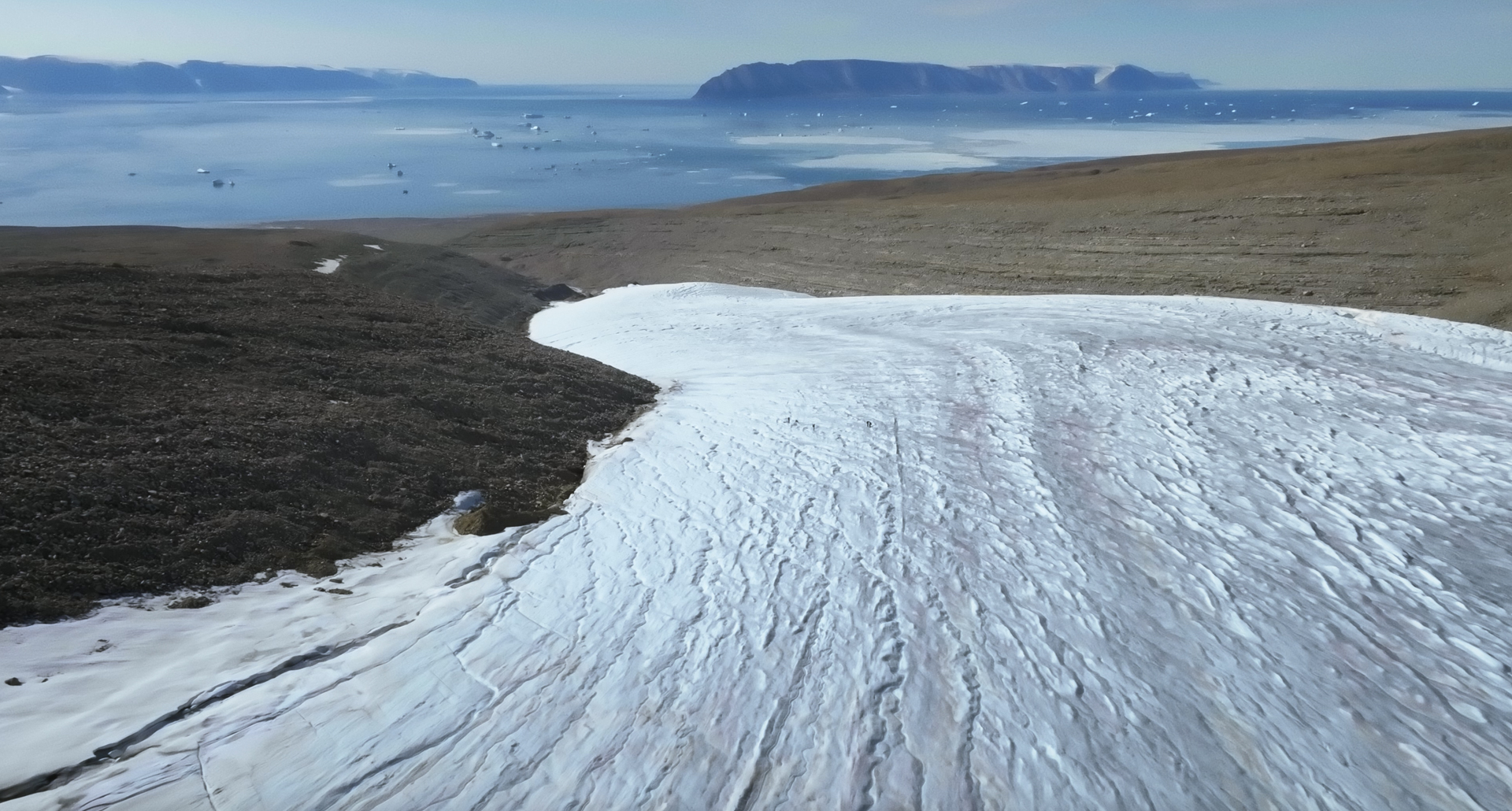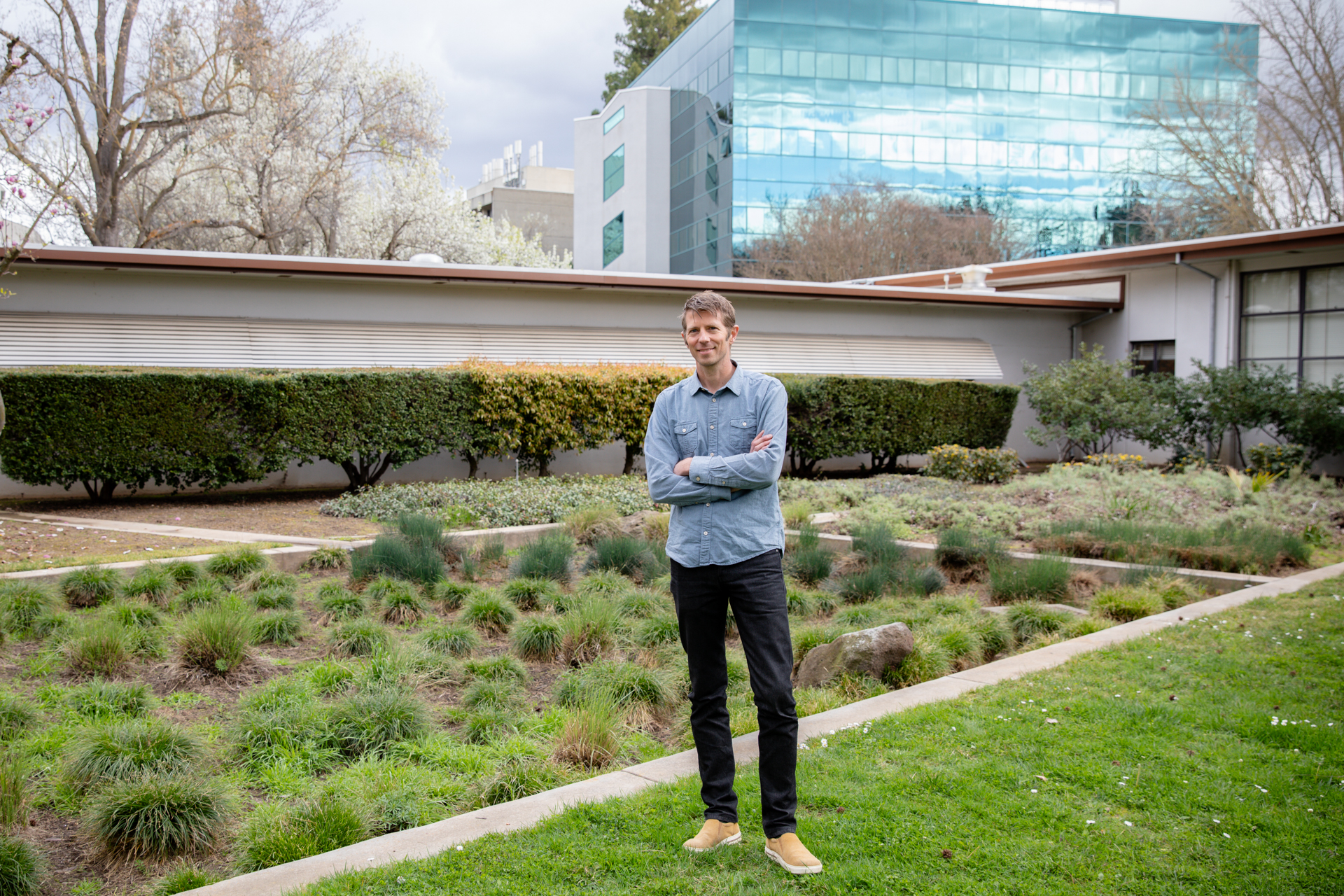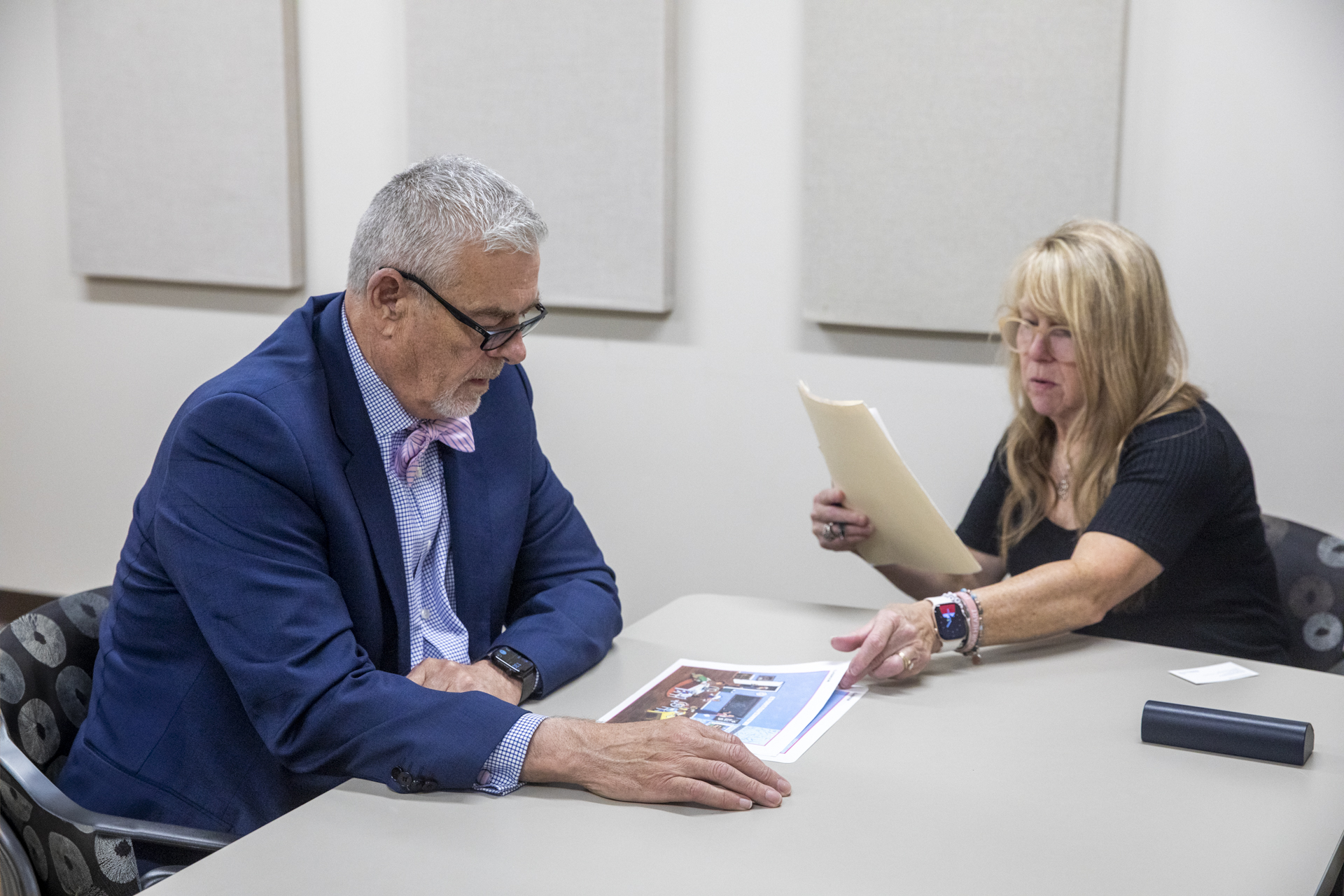Story Content
Summer research program gives Sac State students hands-on experience – and a paycheck
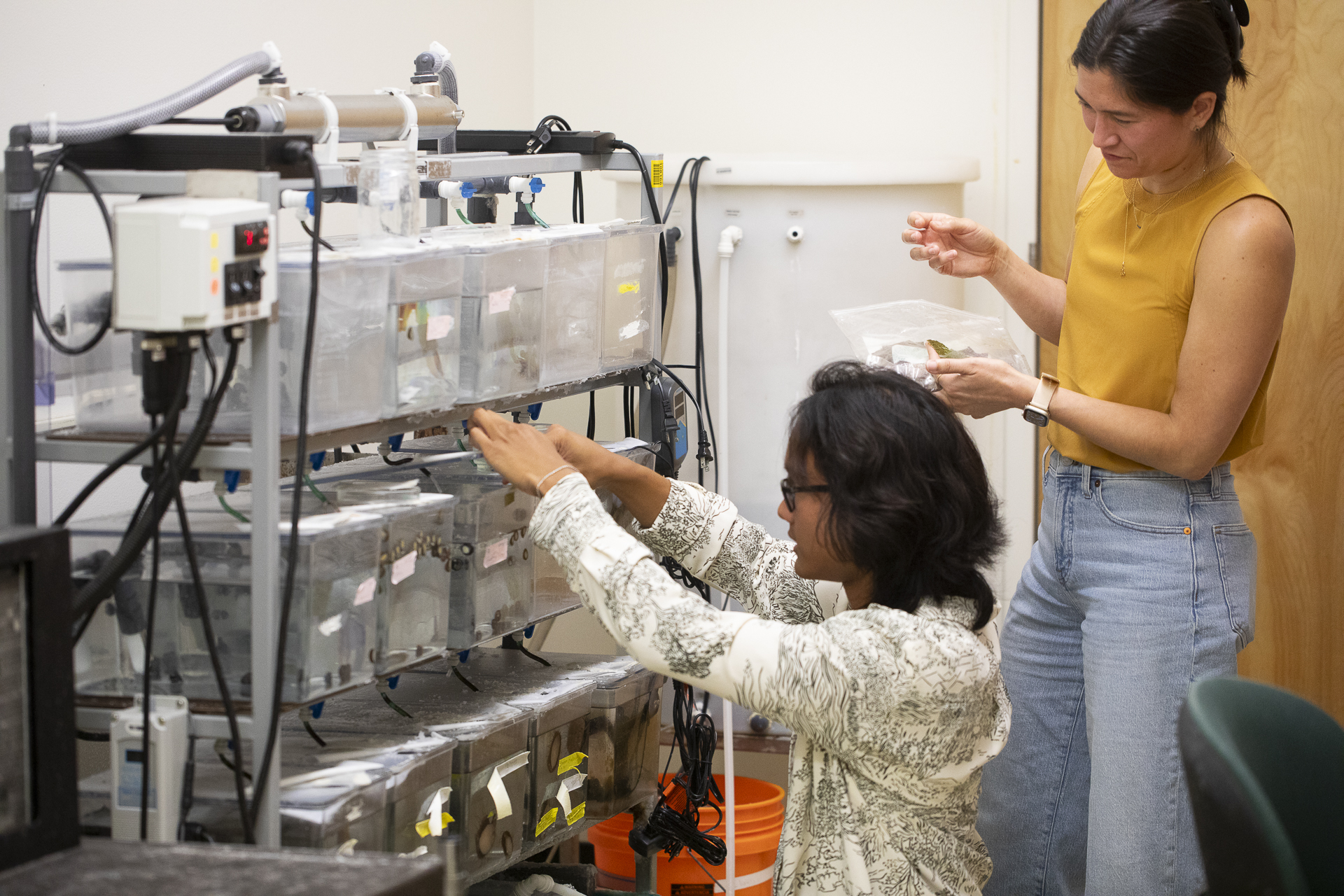
July 03, 2025
In a Sacramento State laboratory this summer, Biology student Kevin Salimo is sharpening his data skills, earning money conducting research and adding to scientific knowledge about how climate change affects ocean creatures.
Salimo is one of 17 students within the College of Natural Sciences and Mathematics who are working full time with faculty members on projects that can further both their education and future careers.
Since 2008, more than 300 Hornets have participated in the Summer Undergraduate Research Experience, earning money while working with faculty on new and ongoing projects.
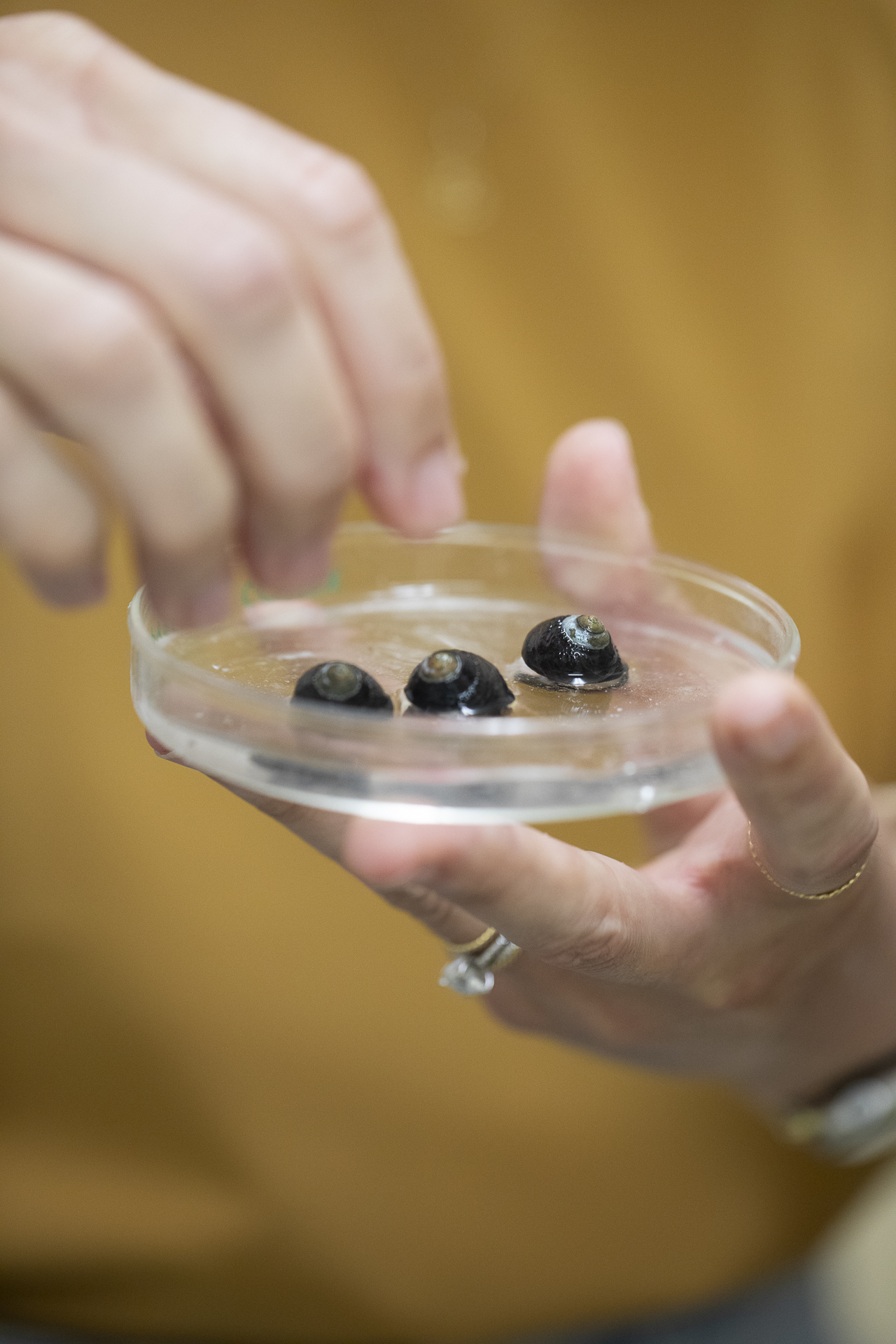
“It’s a great opportunity for students to get paid for conducting research,” said Biology Professor Lani Gleason, Salimo’s mentor. “They can devote all of their time to it,” without the responsibilities of classes, studying, and other responsibilities, she noted. “They can immerse themselves in a project.”
SURE allows students to conduct research while learning practical and critical thinking skills, said Chemistry Professor Katherine McReynolds, who is coordinating this year’s program.
“This experience is something that students can apply to their continued studies and ultimately carry with them into their future careers,” McReynolds said.
This summer’s SURE program is funding work in a variety of fields, including studies of galaxies, geology in the Sierra Nevada, and the barriers and benefits of undergraduate research across the CSU. The projects can help students participate in scientific conferences, get their work published in journals, land jobs or get accepted into top graduate programs.
In Gleason’s lab inside the Tschannen Science Complex, Salimo is adding to his professor’s ongoing research about how warming coastal waters affect black turban snails. The snails dwell in rocky environments along the Pacific Ocean and have shown signs of stress as ocean temperatures rise.
Black turban snails are ideal models to study because their responses to a warming environment translate well to other organisms such as abalone, Gleason said. The snails are important within the ecosystem because they help control kelp and algae, their primary food sources.
“If they disappear, things can really get out of whack,” she said.
The snails, in turn, are consumed by other marine creatures such as sea stars, crabs, and octopi. Their demise “could have a domino effect on the food chain,” said Gleason.
“I love learning and discovering new things, and to get paid for it is really amazing. It’s bigger than just the snails. Whatever affects these snails also has an effect on other organisms.” -- Sac State student Kevin Salimo
Salimo is comparing genetic material from snails collected from the San Diego area to those collected near San Francisco, analyzing differences that might be related to ocean temperatures.
Most of the work is done at a computer, although Gleason also maintains a small colony of snails in a bank of saltwater aquariums in nearby Sequoia Hall.
“I love learning and discovering new things, and to get paid for it is really amazing,” said Salimo. He believes his research experience will boost his resume and help him get into a program that combines Ph.D. and medical degrees.
“I’m excited by the overall big picture of this work,” Salimo said. “It’s bigger than just the snails. Whatever affects these snails also has an effect on other organisms.”
Previous studies have documented that the snail’s population in southern California has plummeted in recent years, with rising ocean temperatures potentially a key factor.
Salimo and Gleason are building on that research, looking at the functioning of genes in the snails that allow them to survive in warmer waters. They ultimately hope to parlay their study into published research.
“I love thinking and talking about science, and it’s super cool to be exploring a new topic that really has never been studied before,” Salimo said.
For the professor and her student, the SURE project already has paid dividends.
“We already are able to answer some questions that we didn’t have the answers to when we started on June 1,” said Gleason.
“I hope that Sacramento State continues to offer this program,” she added. “It’s so important that we prioritize these kinds of opportunities for our students.”
Editor's Pick
Media Resources
Faculty/Staff Resources
Looking for a Faculty Expert?
Contact University Communications
(916) 217-8366
communications@csus.edu
